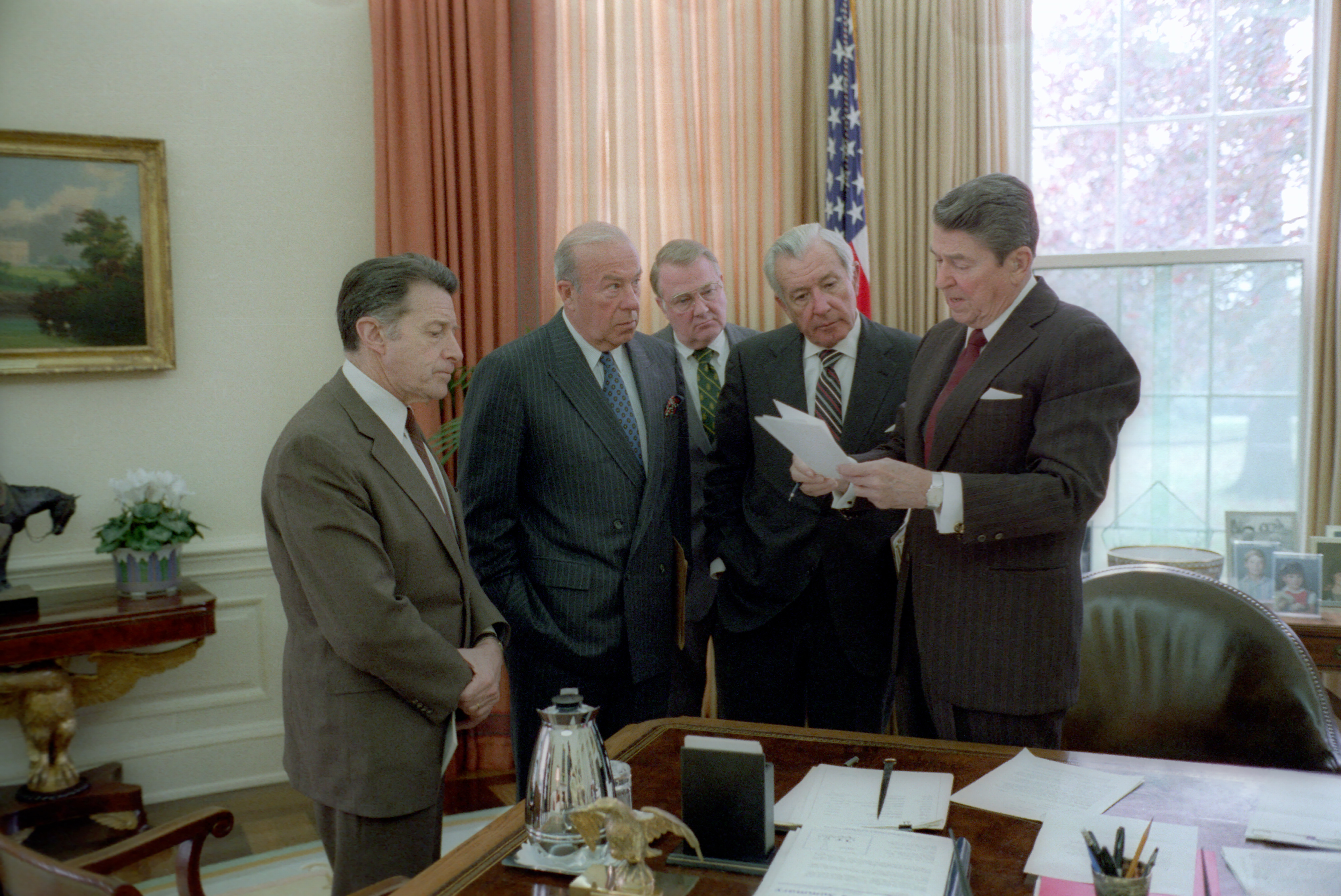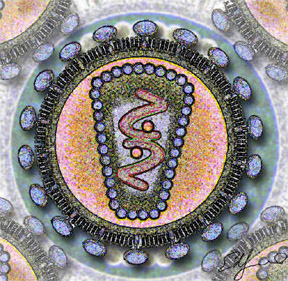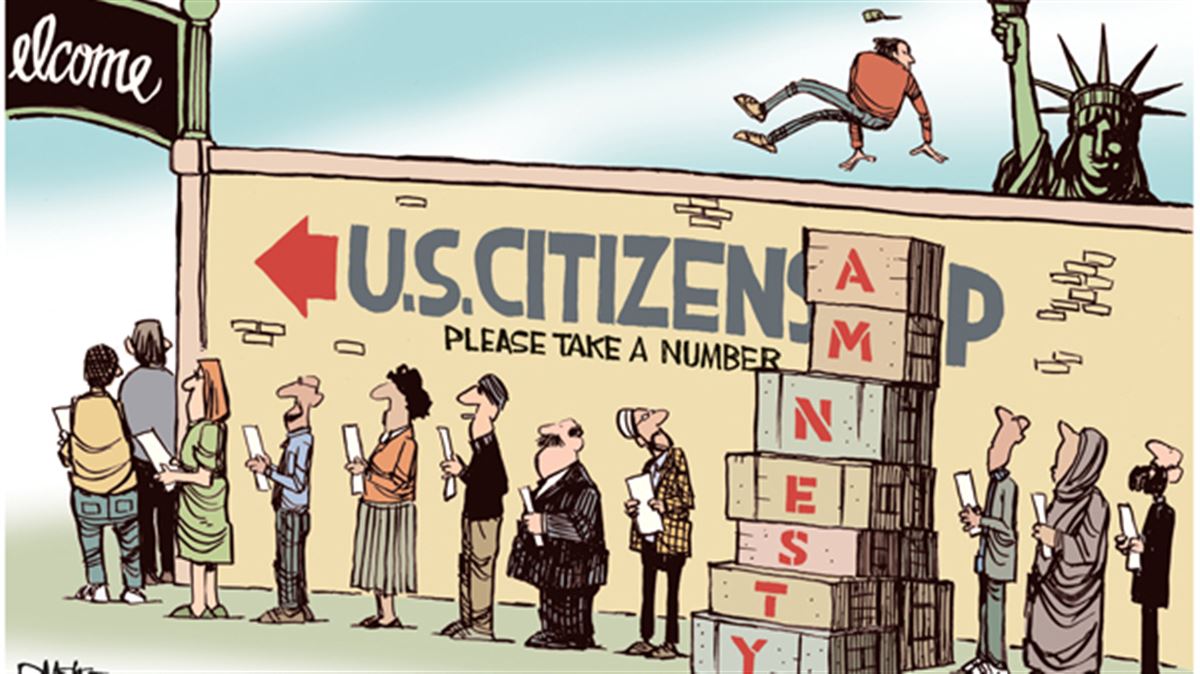Topics on the Page
President Ronald Reagan during a Meeting with Joint Chiefs of Staff, January 15, 1982

- Overview of the Reagan Presidency
- Large Income Tax Cut and Reaganomics
- Major reduction in domestic spending
- Income Inequality Since the 1980s
- Large Increase in spending on National Defense
- Anticommunist Foreign and Defense Policies
- Other Topics
- Reagan and AIDS
- Supreme Court Appointments
- The Conservative Movement
- Air Traffic Controllers Strike of 1981
- Lesson Plans
 Link to AP US History Key Concept 9.1: The Conservative Movement in American Politics
Link to AP US History Key Concept 9.1: The Conservative Movement in American Politics
Focus Question: What were the major impacts of Ronald Reagan's presidency?
Overview of the Reagan Presidency
1980 Presidential Campaign Button

See also, Reagan from the PBS series, The Presidents.
Link here to visit the Reagan Presidential Library
In 1980 when President Reagan won his first term he did so in a convincing manner.
- With 489 electoral votes compared to the 49 electoral votes that President Carter received, the elections were considered a landslide victory.
- When President Reagan ran once again in 1984 his margin of victory was even greater.
- With 525 electoral votes compared to the 13 electoral votes that Walter Mondale received, President Reagan was once again the clear victor, and shattered the record for the highest total of electoral votes ever received by a candidate.
This link provides resources that could be used in a lesson plan about Reagan. This link also includes possible topics that can be discussed as well.
 This lesson plan provides a teacher's guide for showing students Reagan's documentary, Reagan. This lesson plan includes guided questions to ensure students are grasping the main points of the documentary. It includes discussion questions for before and after watching the video and activities (11).
This lesson plan provides a teacher's guide for showing students Reagan's documentary, Reagan. This lesson plan includes guided questions to ensure students are grasping the main points of the documentary. It includes discussion questions for before and after watching the video and activities (11).
Click here for a timeline of Ronald Reagan's life.
Click here for a timeline of Ronald Reagan's presidency.
Check out this 60 Second Presidents video from PBS to get an introduction to Ronald Reagan!
This documentary series begins with an episode asking the question: What Kind of President was Ronald Reagan. The next episode in the documentary series can be found here!: The Highs and Low of Reagan's Presidency
Assassination Attempt
Ronald Reagan became president of the United States in 1980 and went on to serve two terms from 1981-1989.
- His presidency was almost cut short on March 30, 1981, when John Hinckley Jr. attempted to assassinate the President. This was only 69 days after President Reagan had been sworn into office had been sworn into office.
- After Reagan was shot, he was rushed to George Washington University Hospital where he quickly went into surgery on his lung, the target of his injury.
- SSA Timothy McCarthy, DC policeman Thomas Delahanty, and Press Secretary James Brady were also injured in this attempt. As McCarthy and Delahanty both recovered quickly, James Brady was shot in the head and was pronounced dead at the hospital. Brady survived the shooting, but he suffered severe brain damage.
- James Brady soon became an advocate for gun control, an encouraged the "Brady Bill" which required a 5 day waiting period for a background check after purchasing a gun. This was signed in 1993 by President Bill Clinton.
- Here is a copy of the bill.

Here is a link for an interview talking about Ronald Reagan and the Civil Rights Movement.
 Important Speeches by Ronald Reagan
Important Speeches by Ronald Reagan
- He believed in “trickle-down economics,” reasoning that if the rich get richer, the economy gets stronger, and the middle and working classes also benefit.
- Notable events included his sweeping tax cuts
- His “Star Wars” plan in which he hoped to have missile defense systems on the moon in case of nuclear war.
Tax rate cuts and Reaganomics
Reaganomics (also called "Supply-Side" Economics) was a radical reversal of the American economic policy than had been in place since the New Deal.
- This approach holds that if the "government left more money in the hands of the people, they would invest that money, rather than spend the excess money on items like consumer goods."
/reaganomics-did-it-work-would-it-today-3305569-FINAL-5bc4c49a46e0fb0026b4a44a.png)
- In theory this would produce larger production rates, higher employment rates, prosperity as well as larger amounts of income available for the governments use while having lower tax rates.
- Reaganomics [3] describes the major economic policy changes Reagan believed in and enforced during his presidency.
- A major part of this was a series of tax cuts throughout his two terms.
- It was believed that by cutting the taxes of the richest in the nation, they would have even more money and would invest it back into the economy. He was a supporter of supply-side economics, which attempted to create a faster growing economy.
- GDP did grow, but incomes became more unequal and that inequality has continued to grow
- In 2016, the top 1 percent earned 18 percent of all income, double what it did when Reagan entered office ("Trump: What the Market Is Saying," Jeff Madrick, New York Review of Books, November 18, 2016)
Check out this video from the History Channel YouTube page! Here's Why Reganomics was so Controversial
 Khan Academy Video on Reaganomics and how did Reagan's policies affected the economy.
Khan Academy Video on Reaganomics and how did Reagan's policies affected the economy.
Crash Course Reaganomics
Video About Faults in Reaganomics
Click here for a lesson plan about Reaganomics. The theme of this lesson plan is: "this lesson will cover the social impact of President Reagan’s domestic policies for African Americans."
 For more, Historical Biography page: Keynes, von Mises, von Hayek and Friedman
For more, Historical Biography page: Keynes, von Mises, von Hayek and Friedman
This video covers all aspects of Reagan's presidency, but largely focuses on his economic policies. While he did utilize supply-side economics, he did keep many policies of the Great Society and the New Deal. He also worked with Democrats during his second term, promoting bipartisanship. By today's standards, he would be considered more of a moderate.
Economic Recovery Tax Act (1981)
Tax cut requested by Ronald Reagan for the American people. Reagan requested 30% tax cut, instead provided with 25% tax cut, over the course of 3 yrs. This 25% tax cut was the same for all classes, thus those who were in the higher class would receive a greater amount of savings then those individuals of the middle and lower classes.
Click here for a recent article about Reagan's famous tax-cuts and the military tax increases which people tend to forget about
 |
| Data from Emmanuel Saez, University of California, Berkeley. |
Income Inequality since the 1980s
 It's the Inequality, Stupid from Mother Jones Magazine presents a series of charts detailing income redistribution in American society (May/June 2011).
It's the Inequality, Stupid from Mother Jones Magazine presents a series of charts detailing income redistribution in American society (May/June 2011).
See Striking It Richer: The Evolution of Top Incomes in the United States
The Unequal State of America: Government's Role in Inequality in the United States from Reuters.
President Obama's Speech on Income Inequality, December 4, 2013.
- Many economists contend that Reagan administration policies set in motion structural changes in the American economy that have resulted in greater income inequality.
Here is a video of one of Ronald Reagan's most famous quotes about taxing.
Domestic Spending
- Reduced by the Budget Reconciliation Act (1981)
Budget Reconciliation Act (1981)
- Cut domestic spending by $39 Billion, decreasing spending in such areas such as food stamps, education and public housing.
- In addition while decreasing domestic spending it increased the national defense budget by $12 Billion
Domestic Policy:
"The administration also angered civil rights organizations on a number of fronts. Reagan made ill-considered remarks about Martin Luther King, Jr., in 1982 as Congress debated making King's birthday a national holiday. The same year the Reagan administration supported a lawsuit brought by Bob Jones University of South Carolina against the Internal Revenue Service over its long-standing policy of denying tax breaks to segregated schools. The policy originated in 1970 in an effort to combat the development of segregated private schools, which had become popular among whites in the wake of public school desegregation in the South. The IRS policy, though, also affected religious schools such as Bob Jones University, which enrolled a few minority students but forbade interracial dating and marriage."
Anticommunist foreign and defense policies and Iran-Contra Affair
President Reagan Meets with Aides during Iran-Contra Affair, November 25, 1986

For an overview, see Reagan's Foreign Policy from the Office of the Historian at the U.S. Department of State.
Click here for a video of Reagan urging Congress to intervene in Nicaragua
Another interesting aspect of Reagan’s foreign policy was his shift to a defensive stance, which was seen by his Strategic Defense Initiative (SDI) also called “Star Wars.” [6] He hoped to put a missile defense system of lasers on the moon in case of nuclear war with the Soviets.
While many people credit Reagan with the accomplishment of ending the cold war it is important to remember that a lot of the progress made between the United States and the Soviet Union can be credited to the cooperation of Soviet Premier Mikhail Gorbachev who reasoned with the ever so militaristic Reagan. For a biography of Gorbachev, click here. Click here for a video of the signing of the INF treaty between Reagan and Gorbachev.
During Reagan's presidency, the CIA was appointed to intervene in the Soviet-Afghan war. During this intervention, the CIA funded, armed and trained a growing Islamic militia in Afghanistan which was then known as the "Mujahideen." Today they are referred to as Al-Qaeda. Click here for an interesting article which shows the transformation of this group from one of America's allies to one of the US's most sworn enemies.
Here is a brief video explaining the Iran-Contra Affair.
A lesson plan for the Iran-Contra Affair is located here.
 Reagan and AIDS
Reagan and AIDS
 Cross-section of the Human Immunodeficiency Virus
Cross-section of the Human Immunodeficiency Virus
Despite the fact that a lot of Americans remember Reagan's presidency fondly, many remember his actions, or lack thereof, in response to the outbreak of the AIDS epidemic.
- During the 1960's LGBTQ activist made significant advances in civil rights protecting against discrimination in public employment. As AIDS began popping up so did backlash against LGBTQ civil rights.
- Click here to read more about discrimination against the LGBTQ community during the AIDS epidemic.
 A Timeline of AIDS
A Timeline of AIDS
For more, see How It Began: HIV Before the Age of AIDS from Frontline.
C. Everett Koop: Pioneering Surgeon General Spurred Reagan Response to AIDS
This article explains how Reagan was not active in gaining rights for women. Reagan did not promote the Equal Rights Amendment and supported a Human Life Amendment that would ban abortion and certain birth controls. He also downsized the Equal Employment Opportunity Commission (12).
This article portrays Reagan as someone very against the Civil Rights Movement. Reagan did not approve of both the Civil Rights Act of 1964 and the Voting Rights Act of 1965. He was also against affirmative action but did not try to enact policies to stifle it (13).
Supreme Court appointments
 |
| Sandra Day O'Connor and Husband with President George W. Bush, 2005 |
Reagan brought many changes in the Supreme Court during his presidency.
He appointed three Justices (Sandra Day O’Connor, Antonin Scalia, and Anthony Kennedy), and also made William Rehnquist Chief Justice.
The court therefore took a marked conservative turn. O’Connor became the First Woman to serve as a Justice on the Supreme Court, which was something Reagan had said he wanted to do.
Justices O’Connor and Kennedy were sometimes swing votes, especially on questions of keeping abortion legal, but for the most part these were all conservative appointments.
Click here for more information and a lesson plan about the appointment of Sandra Day O'Connor- the first woman to serve on the Supreme Court of the United States!
 Click here for more information on Sandra Day O'Connor, the first woman to serve on the Supreme Court.
Click here for more information on Sandra Day O'Connor, the first woman to serve on the Supreme Court.
The First Lady- An online link to a Biography on Nancy Reagan from Biography.com
The Conservative Movement
The conservative movement was put in full force while Reagan was president. Reagan found support with people who agreed with his economic policy, also known as "Reaganomics" and with people who were also against communism. During the time of Reagan's presidency, the cold war was a big fear for many people and the strengthening of the military was supported by many who feared nuclear war. The administration of Reagan is when the modern conservative movement first came into ascension.
See Rick Perlstein's series of books on the rise of American conservatism in the second half of the 20th century
- Before the Storm
- Nixonland
- The Invisible Bridge
For a recent perspective, see a 2009 Bill Moyers Journal segment, Conservative Movement Woes.
Click here for an interesting discussion from historian Will Bunch who explains the use of mythology in creating Reagan's legacy which is remembered today.
Regan on Immigration
- in 1986 president Reagan signed the Immigration reform and control act after it was passed by congress.
- On the surface this was a very conservative act, as it made it illegal to hire illegal immigrants.
- Furthermore, companies that had illegal immigrants employed could face steep penalties.
- However, the act also provided amnesty to illegal immigrants who have been in the US prior to January 1st, 1982
- That was seen as a progressive aspect of the otherwise conservative act.
- The act however is widely regarded as unsuccessful because following its enactment the US estimates of illegal immigrants have rose exponentially.
For more on the legacy of this act click below for an npr article on the impacts of amnesty:
https://www.npr.org/templates/story/story.php?storyId=128303672

The Air Traffic Controllers Strike of 1981

Replacement of striking air traffic controllers with non-union personnel
Reagan fired 11,359 striking air traffic controllers.
- They were demanding more money and better working conditions; after repeated warnings to return to work, they were all fired, and replaced by non- participants of the strike.
- The union was called PATCO and the event led to other employers replacing striking employees in far greater numbers then ever before.
Reagan hosting a Q&A on the Air Traffic Controller Strike
Labor History: The Air Traffic Controllers Strike from State Vocational Federation of Teachers
The Strike That Busted Unions, The New York Times, August 2, 2011
Introduction to the PATCO Curriculum, Georgia State University
Lesson Plans
The Presidency of Ronald Reagan lesson plan:https://www.c-span.org/classroom/document/?10317
Reaganomics lesson plan:https://www.reaganfoundation.org/education/curriculum-and-resources/curriculum/reaganomics-101/
Ronald Reagan curriculum and lesson plans:https://www.reaganfoundation.org/education/curriculum-and-resources/curriculum/
Links
[1] Retrieved April 29, 2007, from Ronald Reagan Presidential Foundation and Library Web site: http://www.reaganlibrary.com/
[2] (2000). Iran-Contra Affair. Retrieved April 29, 2007, from PBS Web site: http://www.pbs.org/wgbh/amex/reagan/peopleevents/pande08.html
[3] Niskanen, W. A. Reaganomics. Retrieved April 29, 2007, from The Library of Economics and Liberty Web site: http://www.econlib.org/library/Enc/Reaganomics.html
[4] (April 25, 2007). Detente . Retrieved April 29, 2007, from Wikipedia Web site: http://en.wikipedia.org/wiki/D%C3%A9tente
[5] (April 21, 2007). Contras. Retrieved April 29, 2007, from Wikipedia Web site: http://en.wikipedia.org/wiki/Contras
[6] Succeed by Studying the History of the Strategic Defense Initiative. Retrieved April 29, 2007, from School for Champions Web site: http://www.school-for-champions.com/sdi.htm#Development
[7] Bucher, N. The Air Traffic Controllers' Strike of 1981. Retrieved April 29, 2007, from University of St. Francis Web site: http://www.stfrancis.edu/ba/ghkickul/stuwebs/btopics/works/atcstrike.htm
[8] Map of Nicaragua
http://www.worldatlas.com/webimage/countrys/namerica/camerica/ni.htm
[9] ACT UP and similar groups were started in the 1980s in response to Regan-instigated conservatism http://www.actupny.org/
[10] photos of Supreme Court justices found at: http://www.michaelariens.com/ConLaw/justices/list.htm
(11) http://www.pbs.org/wgbh/americanexperience/features/teachers-resources/reagan-guide/
(12) http://womensenews.org/2004/06/time-bury-reagans-legacy-women/
(13) http://historynewsnetwork.org/article/158887
(14) http://www.shmoop.com/reagan-era/
(15) https://www.youtube.com/watch?v=2h4DkpFP_aw
(16) https://www.history.com/this-day-in-history/president-reagan-shot
Comments (0)
You don't have permission to comment on this page.